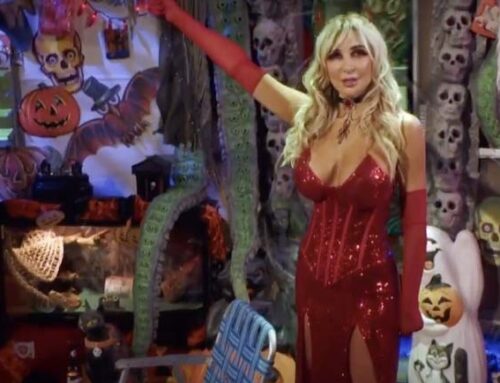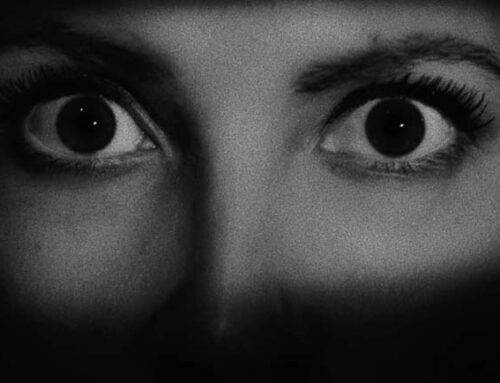Horror is nothing if not unexpected. It can hide in the most seemingly innocuous places, and it can strike at the most startling times. Nothing is as ever as it appears, and that is the foundation upon which the short film Break In Break Out was constructed.
Written and directed by Michael Daniele Driscoll, Break In Break Out is an action/thriller short film that follows a burglar who just so happens to have picked the wrong house to try to rob. By rooting the story in simplicity and throwing in a couple of twists to spice up the action, this short film offers a fun exercise in misdirection and visual storytelling that is only hampered by its overly frenetic pace and inconsistent stylization.
The short opens with roommates Aaron (Robert Morse) and Bob (James Rejent), who are watching the news at home just as a burglar (Nick Smyth) is breaking into their house. As the burglar clandestinely prowls through the house, he stumbles upon Tamara (Athena Karkanis), a young woman the two homeowners are holding captive. This is an engaging setup and the addition of the Don’t Breathe-like-bait-and-switch effectively twists the plot from a home invasion to an escape film. It establishes early on that the film seeks to subvert expectations, and this decision works in its favor.
Even though its designed with twists and turns in mind, Break In Break Out does its best to keep things relatively simple. In fact, save for a news broadcaster shown at the beginning and end of the film, there’s virtually no dialogue in the film. Rather, it relies on visual storytelling techniques to convey its ideas and its tone to the audience. The visuals on display here—making use of high contrast lighting, high angle camera placement, and moody shot compositions—demonstrate that the filmmakers put effort into making something that’s visually captivating. They show rather than tell, and (regardless of their budget) they do so with confidence and vision.
With that said, every strength here proves to be a double-edged sword, with one of most notable being the film’s pace. Rather than giving plot developments and twists room to breathe, the film races from scene to scene at a nearly whiplash-inducing pace until it reaches a final twist during its last few moments that, while certainly unexpected, doesn’t feel wholly necessary. While the break-neck pace and frenetic editing might work for some viewers—it is effective during the fight scenes—a less rushed would have given the twists and story beats greater impact.
The frenetic pace of the film is further intensified by its hyperactive stylization. While the camerawork is certainly inspired, there’s little cohesion in regard to the film’s visual style. The look and feel of the film change rapidly between scenes and sometimes even between shots. For example, the look of a single scene will change from grungy and green like Saw to being bathed in colorful red light before switching again to a more orange-infused color grade. These changes happen in a matter of seconds without any apparent motivation, and it makes the film feel disjointed. Couple this with several uses of glaringly obvious post-production shot enhancements and filters (such as adding haze or stars to shots that clearly did not have them originally), and you have an end result feels stylized for the sake of stylization rather than for any story-driven or emotionally motivated reason.
As its title suggests, Break In Break Out gets in and gets out as quickly as it can, and it makes for an amusingly twisty, visually driven thrill ride. While a less frenetic pace and a greater level of restraint on the part of the filmmakers could have greatly benefitted this short, it still manages to be an enjoyable seven minutes nonetheless.







